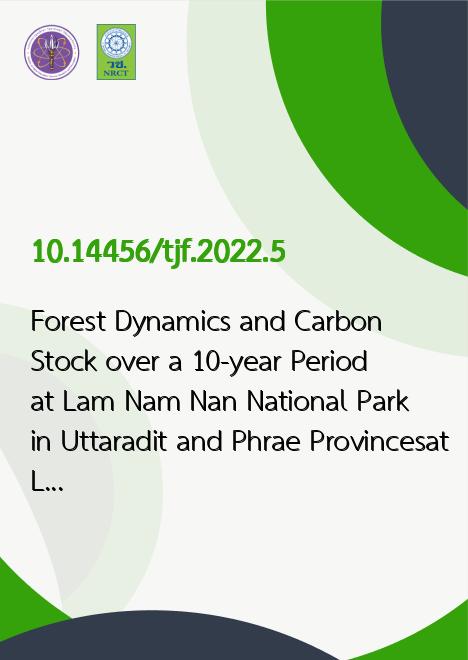
|
Forest Dynamics and Carbon Stock over a 10-year Period at Lam Nam Nan National Park in Uttaradit and Phrae Provincesat Lam Nam Nan National Park in Uttaradit and Phrae Provinces |
|---|---|
| รหัสดีโอไอ | |
| Creator | Jutaporn Thongnun |
| Title | Forest Dynamics and Carbon Stock over a 10-year Period at Lam Nam Nan National Park in Uttaradit and Phrae Provincesat Lam Nam Nan National Park in Uttaradit and Phrae Provinces |
| Contributor | Pichit Lumyai, Santi Suksard, Supasit Sriarkarin |
| Publisher | Kasetsart University |
| Publication Year | 2565 |
| Journal Title | Thai Journal of Forestry |
| Journal Vol. | 41 |
| Journal No. | 2 |
| Page no. | 48-62 |
| Keyword | Biomass, Carbon stock, Dynamics, Growth, Periodic annual increment |
| URL Website | https://li01.tci-thaijo.org/index.php/tjf/issue/view/17486 |
| Website title | Thai Journal of Forestry |
| ISSN | 2730-2180 |
| Abstract | This research aimed to monitor the changes in forest dynamics such as species diversity, density of trees, sapling and seedling stages, tree volume, periodic annual increment (PAI), biomass, and carbon dioxide absorption in each forest type. Twenty-three concentric sample plots were established in 2010 for tree census and were measured again in 2020. The four forest types were classified as mixed deciduous forest (MDF), dry evergreen forest (DEF), dry dipterocarp forest (DDF), and hill evergreen forest (HEF). The number of plots in each forest type were 17, 3, 2, and 1. The tree density decreased from 73.04ฑ67.89 tree/rai to 72.77ฑ96.54 tree/rai; sapling decreased from 7.03ฑ12.90 tree/rai to 3.27ฑ1.71 tree/rai and seedling decreased from 17.32ฑ5.39 to 7.93ฑ8.96 tree/rai. The tree volume however increased from 12.28ฑ7.04 to 13.81ฑ6.55 m3/rai. A paired-samples t-test was used to compare the change in tree volume between the two years and indicated that the change was non-significant. In terms of stand volume growth, the gross growth increased by 2.92ฑ3.14 m3/rai. The net growth increased by 1.51ฑ4.02 m3/rai. The biomass increased from 10.23ฑ6.45 tons/rai to 13.25ฑ3.36 tons/rai. The periodic annual increment in biomass was 0.308ฑ0.750 tons/rai/year. The total carbon dioxide absorption by each forest type was 3,348,865.83 tC and carbon dioxide sequestration was 12,279,895.09 tCO2eq. Forest type with the highest carbon dioxide sequestration potential was found to be mixed deciduous forest followed by dry evergreen forest, deciduous dipterocarp forest, and hill evergreen forest. |